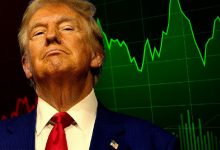Legendary Macro Investor Ray Dalio on “When Cash Was Trash” and the Economy’s Surprising Strength

Ray Dalio, the founder of Bridgewater Associates, recently took to LinkedIn to discuss the unexpected strength of the economy, even as the Federal Reserve tightens its monetary policy.
The 74-year-old American, whose net worth is estimated to be around $19.1 billion (as of 9 September 2023), created the asset management firm Bridgewater Associates from his New York City apartment just two years after receiving his MBA from Harvard Business School.
According to Dalio, this anomaly can be traced back to a government-led redistribution of wealth that has rendered the private sector largely impervious to the Fed’s actions.
Dalio attributes the current economic strength to a significant shift in wealth from the public sector and bondholders to the private sector. This move, he says, has insulated households and businesses from the Federal Reserve’s rapid policy changes. As a result, the private sector’s balance sheets are in good shape, while the government’s financial standing has deteriorated. Dalio points out that central governments globally are facing worsening balance sheets due to large deficits and losses on government bonds.
Dalio traces the origins of this shift to 2020 and 2021, a period characterized by enormous budget deficits and massive central bank bond purchases. He recalls a time “when cash was trash,” explaining that banks, encouraged by central banks, bought government bonds, thereby supporting the government’s fiscal policies.
In 2022, the economic landscape began to change. With inflation rising and unemployment rates dropping, governments and central banks started to roll back their ultra-accommodative fiscal and monetary policies. Despite these changes, Dalio notes that the private sector continued to thrive, thanks to earlier government interventions that had boosted net worth and income levels.
Dalio emphasizes that the deteriorating financial health of central governments and banks is a concern. These entities have debt obligations and will likely resort to taxation and money printing to meet them. While this may not pose immediate problems, Dalio suggests that it could become a significant issue in the long term.
Dalio also refers to his 2018 book, “Principles for Navigating Big Debt Crises,” where he discusses similar historical scenarios. He labels the current approach “Monetary Policy 3,” a stage in the long-term debt cycle that follows two other types of monetary policies aimed at stimulating the economy.
Looking ahead, Dalio anticipates a period of slow growth and high inflation, although he acknowledges a range of uncertainties that could influence this outlook. He warns of a self-reinforcing debt spiral that could impose market-driven debt limits, forcing central banks to print more money and buy more debt.
Dalio concludes by mentioning other significant forces that will interact with the financial landscape, such as domestic and international conflicts, climate change costs, and disruptive technologies. He refrains from going into detail on these topics but indicates that they will substantially impact the economy and markets in the coming years.
Featured Image via Pixabay




 Bitcoin
Bitcoin  Ethereum
Ethereum  Tether
Tether  USDC
USDC  Dogecoin
Dogecoin  Cardano
Cardano  TRON
TRON  Chainlink
Chainlink  Bitcoin Cash
Bitcoin Cash  LEO Token
LEO Token  Litecoin
Litecoin  Dai
Dai  Stellar
Stellar  Ethereum Classic
Ethereum Classic  Monero
Monero  Cronos
Cronos  Stacks
Stacks  OKB
OKB  Hedera
Hedera  Cosmos Hub
Cosmos Hub  Maker
Maker  KuCoin
KuCoin  Theta Network
Theta Network  Gate
Gate  Algorand
Algorand  Polygon
Polygon  NEO
NEO  EOS
EOS  Tether Gold
Tether Gold  Tezos
Tezos  Zcash
Zcash  TrueUSD
TrueUSD  Synthetix Network
Synthetix Network  IOTA
IOTA  Bitcoin Gold
Bitcoin Gold  Holo
Holo  Dash
Dash  0x Protocol
0x Protocol  Zilliqa
Zilliqa  Siacoin
Siacoin  Enjin Coin
Enjin Coin  Ravencoin
Ravencoin  Basic Attention
Basic Attention  Qtum
Qtum  Decred
Decred  Ontology
Ontology  NEM
NEM  Lisk
Lisk  Nano
Nano  Numeraire
Numeraire  Pax Dollar
Pax Dollar  DigiByte
DigiByte  Waves
Waves  Status
Status  Hive
Hive  Huobi
Huobi  Steem
Steem  BUSD
BUSD  Ren
Ren  OMG Network
OMG Network  Bitcoin Diamond
Bitcoin Diamond  Bytom
Bytom  Kyber Network Crystal Legacy
Kyber Network Crystal Legacy  HUSD
HUSD